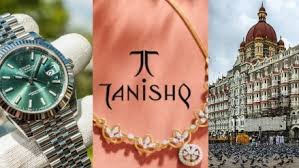India’s luxury market has witnessed unprecedented growth over the past two decades, transforming from a niche segment into a thriving ecosystem worth billions of dollars. At the heart of this transformation stand three iconic brands that have not just captured market share but have become synonymous with affluent Indian lifestyles: Rolex, Tanishq, and Taj Hotels. These brands have masterfully navigated India’s complex cultural landscape, economic aspirations, and evolving consumer preferences to establish themselves as the ultimate symbols of success and sophistication.
The Rise of India’s Affluent Class
India’s millionaire population has grown exponentially, with the country now home to over 372,000 millionaires according to recent estimates. This surge is driven by robust economic growth, a booming technology sector, entrepreneurial success stories, and generational wealth transfer. The Indian luxury consumer is distinctive – they value heritage, craftsmanship, and brands that understand their cultural nuances while offering global prestige.
Unlike Western luxury consumers who might prioritize exclusivity above all else, Indian millionaires seek brands that offer both international recognition and cultural resonance. They want luxury that tells a story, connects to their roots, and provides social currency in their communities.
Rolex: Timekeeping Excellence Meets Indian Aspirations
The Swiss Precision Advantage
Rolex’s dominance in India’s luxury watch market stems from its perfect alignment with Indian values around success, tradition, and craftsmanship. The brand’s century-old heritage resonates deeply with Indian consumers who revere established legacy and proven excellence.
Key Success Factors:
Heritage and Craftsmanship: Indian consumers, particularly those from business families, appreciate Rolex’s commitment to traditional watchmaking techniques passed down through generations. This mirrors the Indian concept of “parampara” (tradition) where skills and values are transferred across generations.
Status Symbol Integration: In Indian society, visible symbols of success carry significant weight. A Rolex on one’s wrist communicates achievement, reliability, and good taste – qualities highly valued in business and social circles.
Investment Value: Indian consumers are astute about value retention. Rolex watches often appreciate or hold their value, making them attractive to a demographic that views luxury purchases as investments rather than mere expenses.
Cultural Marketing: Rolex has skillfully associated itself with Indian success stories, from Bollywood celebrities to business magnates and sports personalities, creating aspirational connections that resonate across demographics.
Market Positioning Strategy
Rolex maintains exclusivity through controlled distribution, authorized dealers, and limited availability – a strategy that works exceptionally well in India where scarcity often drives desirability. The brand’s price points, while premium, are positioned as accessible luxury for India’s growing millionaire class.
Tanishq: Redefining Indian Jewelry Excellence
Cultural Connection and Modern Appeal
Tanishq’s success story is perhaps the most remarkable, as it transformed India’s traditional jewelry market by combining cultural authenticity with contemporary design and retail excellence.
Revolutionary Approach:
Trust and Transparency: In a market historically plagued by concerns about gold purity and fair pricing, Tanishq introduced standardized pricing, purity guarantees, and transparent practices. This built immense trust among consumers who had traditionally relied on family jewelers.
Design Innovation: Tanishq successfully bridges traditional Indian jewelry designs with contemporary aesthetics. Their collections cater to modern Indian women who want pieces that work for both traditional occasions and contemporary settings.
Occasion-Based Marketing: Understanding that jewelry purchases in India are deeply tied to auspicious occasions, festivals, and life events, Tanishq created targeted campaigns for weddings, festivals, and personal milestones.
Retail Experience: The brand revolutionized jewelry retail in India with standardized stores, professional service, and a premium shopping experience that matched international standards.
Cultural Significance
Jewelry in India transcends mere ornamentation – it represents security, tradition, and social status. Tanishq positioned itself not just as a jewelry brand but as a curator of Indian cultural heritage, making it the go-to choice for affluent families seeking pieces that honor tradition while embracing modernity.
Taj Hotels: Hospitality Excellence with Indian Soul
The Palace Hotel Experience
Taj Hotels has dominated India’s luxury hospitality sector by offering experiences that blend Indian hospitality traditions with world-class service standards. The brand’s success lies in its deep understanding of Indian luxury expectations and cultural nuances.
Distinctive Elements:
Heritage Properties: Many Taj hotels are housed in former palaces, creating unique experiences that money cannot buy elsewhere. Properties like Taj Lake Palace in Udaipur and Taj Falaknuma Palace in Hyderabad offer guests the chance to live like royalty.
Indian Hospitality Philosophy: The concept of “Atithi Devo Bhava” (guest is God) is deeply embedded in Taj’s service philosophy, creating experiences that feel authentically Indian while meeting international luxury standards.
Culinary Excellence: Taj hotels have preserved and elevated Indian culinary traditions while offering international cuisine, making them destinations for both domestic and international luxury travelers.
Business-Friendly Luxury: Understanding that many Indian millionaires are business owners, Taj hotels excel in providing luxury experiences that seamlessly blend leisure and business needs.
Market Leadership Strategy
Taj’s strategy focuses on creating emotional connections with guests through personalized service, cultural immersion, and attention to detail that anticipates Indian guest preferences. The brand has successfully expanded internationally while maintaining its Indian identity.
Understanding the Indian Luxury Consumer
Unique Characteristics
Value-Conscious Luxury: Indian luxury consumers are sophisticated buyers who research extensively and expect value even at premium price points. They appreciate craftsmanship, heritage, and long-term value retention.
Social Validation: Luxury purchases in India often serve social signaling purposes. Brands that offer recognizable status symbols while maintaining cultural appropriateness succeed.
Family-Centric Decisions: Many luxury purchases involve family consultation and are viewed as family assets rather than individual acquisitions.
Festival and Occasion Sensitivity: Timing purchases around auspicious occasions, festivals, and family celebrations is crucial for luxury brands in India.
The Digital Transformation
All three brands have successfully embraced digital transformation while maintaining their luxury positioning. They’ve leveraged social media, influencer partnerships, and digital marketing to reach younger affluent consumers while preserving their premium brand image.
Digital Strategies:
- Exclusive Online Experiences: Virtual showrooms, private consultations, and digital-first launches
- Social Media Storytelling: Sharing heritage stories, craftsmanship videos, and customer testimonials
- Influencer Collaborations: Partnering with celebrities, business leaders, and cultural icons
Challenges and Opportunities
Current Challenges
Economic Volatility: Luxury spending can be sensitive to economic fluctuations and policy changes Generational Shifts: Younger consumers have different luxury preferences and shopping behaviors Sustainability Concerns: Growing awareness about ethical sourcing and environmental impact Competition: International luxury brands increasing their India focus
Future Opportunities
Tier-II and Tier-III Cities: Expanding luxury markets beyond metros Women Consumers: Growing purchasing power of women in luxury segments Experience Economy: Shift from product ownership to experiential luxury Customization: Demand for personalized and bespoke luxury offerings
The Path Forward
The success of Rolex, Tanishq, and Taj Hotels in India’s luxury market offers valuable insights for other brands seeking to establish themselves in this dynamic market. Success requires:
- Cultural Intelligence: Deep understanding of Indian values, traditions, and social dynamics
- Quality Commitment: Unwavering focus on product/service excellence
- Trust Building: Transparent practices and consistent delivery
- Heritage Storytelling: Communicating brand legacy and craftsmanship
- Adaptive Strategy: Evolving with changing consumer preferences while maintaining core brand values
Conclusion
India’s luxury landscape continues to evolve, driven by economic growth, changing demographics, and global aspirations. Rolex, Tanishq, and Taj Hotels have established themselves as dominant players not just through superior products and services, but by understanding and respecting the unique characteristics of Indian luxury consumers.
These brands have demonstrated that success in India’s luxury market requires more than global recognition – it demands cultural authenticity, value creation, and the ability to become part of consumers’ identity and aspirations. As India’s millionaire population continues to grow, these brands are well-positioned to maintain their dominance while new players will need to learn from their playbook to succeed in this sophisticated and discerning market.
The future of India’s luxury landscape looks bright, with opportunities for both established players and newcomers who can crack the code of combining global luxury standards with Indian cultural sensibilities. The brands that master this balance will continue to thrive in one of the world’s most promising luxury markets.




